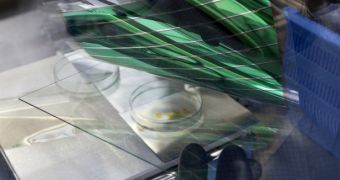Solar energy is one of the, if not the most, convenient natural resources, being essentially inextinguishable, so we'll definitely take notice of any breakthrough in this field.
It so happens that an upstart German company has set the foundations for what may be the future or energy harnessing.
Under the apt name of Heliatek, the company came up with a new type of solar panel, one that is about as good as conventional ones, but has two key benefits.
One is that it is flexible, which means that it can be used for mostly everything involving solar power, from plants to consumer electronics.
The other benefit is that it is partially transparent, bringing tinted windows on the list of potential applications.
Add to that a very small weight and you have a highly versatile product that can generate roughly as much electricity as needed to challenge common solar panels, especially when it is hot or cloudy.
The technology behind the screens has things in common with OLED, being based on organic solar cells that are more efficient than polymer-based ones and just as long-lived as conventional silicon solar cells.
This is a far cry from the initial organic solar cells, which were types of long polymer, cheap to print, but inefficient and with short lifespans.
Heliatek calls its new cells oligomers and deposits them on sheets of polyester film with a vacuum-deposition process, with precise thickness and uniformity control.
8 percent of light is converted into energy by a complete panel. For the sake of comparison, polymer organic panels convert 3 to 5% while silicon panels have a 14 to 15% efficiency, but not a very good performance in low light and high heat.
What's more, even though vacuum deposition is pricier than printing, Heliatek makes the cells continuously on rolls of the aforementioned polyester, instead of using batches of sheets of glass.
The company now hopes to score funding for a manufacturing plant and then work to improve efficiency to 12% (“tandem” solar cells that have two light-absorbing layers). Contracts for use as tinted windows are already being negotiated.

 14 DAY TRIAL //
14 DAY TRIAL //